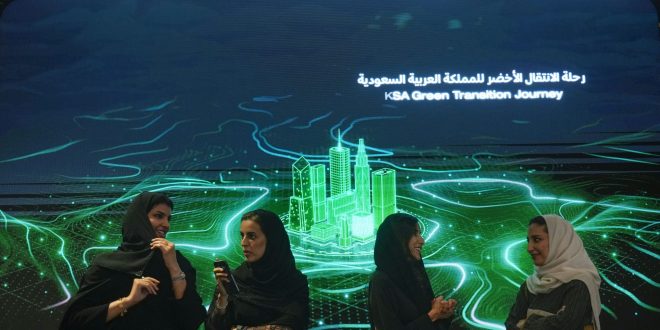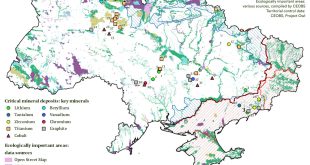After decades of growing rich on oil exports, Riyadh recognizes that it must adapt to a changing climate and global economy if the Kingdom—and Saudi leaders are betting big.
In the last half-decade, Saudi Arabia has deliberately set out to realize a green economy and achieve an energy transition that will position the country to flourish in a post-oil world. To this end, the Kingdom has unveiled several bold initiatives aimed at reducing carbon emissions, increasing the potential for renewable energy sources, and leading the way in the development of clean energy technologies. In 2021, Riyadh formally adopted the Circular Carbon Economy (CCE) Index, which empowers Saudi leaders to track and compare progress toward the Kingdom’s climate goals. Indeed, the Saudi Green Initiative (SGI), has set a goal to reduce carbon emissions by an astounding 278 million tons annually by 2030. By the same year, Saudi Arabia hopes to derive 50 percent of its electricity from renewable sources. The Kingdom also intends to create 250,000 tons of green hydrogen per year by 2026. To meet these lofty goals, Saudi Arabia has made significant investments in the advancement of green hydrogen projects, in line with Saudi Arabia’s Vision 2030, a major economic guidance initiative first unveiled in 2016 under the leadership of then-Deputy Crown Prince Mohammed bin Salman (MBS). Vision 2030 endeavors to diversify the country’s economic resources away from its traditional reliance on hydrocarbons and promote sustainability throughout Saudi society. These goals harmonize with the larger pledge to an all-encompassing energy transformation and a green economy.
Vision 2030 and the Energy Transition
The Saudi economy, which has long been synonymous with hydrocarbon-dependent growth, is now leading the Middle East’s energy revolution; through Vision 2030, the Kingdom has set an objective of reaching net-zero greenhouse gas emissions by 2060, which places it at the forefront of the region’s environmental aspirations. The plan outlines a comprehensive blueprint for social and economic development, setting a regional standard for other Gulf monarchies to follow. This dedication is demonstrated by Saudi Arabia’s numerous strategic plans and ambitious goals intended to transform the main driver of Saudi government revenues: the energy sector.
Specifically, Saudi authorities have identified the need to increase the efficiency of energy generation while cutting expenses and diminishing the energy sector’s reliance on liquid fuel to meet domestic power consumption. Of course, such a move would not just support the Kingdom’s green initiatives, but would also meet Riyadh’s Vision 2030 goal of receiving half of its domestic power from renewable sources.
To achieve these objectives, Saudi Arabia has promised to invest $187 billion in renewable energy projects, such as the installation of solar panels on both residential and commercial buildings. Meanwhile, the country is aggressively courting foreign investors to advance its renewable energy projects. Despite these efforts, much more must be done if Saudi Arabia is to reach net-zero by 2060—a tall order considering it would mean achieving this goal just a decade after the United States.
Solar, Wind, Nuclear, and Electric Vehicles
Saudi Arabia has launched several green projects to complement its investments in infrastructure and technology. These programs, essential components of the SGI, offer a structured and progressive solution to the problems caused by climate change.
To demonstrate its commitment to the green energy transition, Saudi Arabia has started several key renewable energy programs. Foremost among these is the Sakaka Solar PV Project, one of the Kingdom’s flagship solar plants. Through this initiative and others, Saudi Arabia hopes to produce 58.7 GW of renewable energy by 2030. Saudi Arabia has also achieved notable progress in the development of wind energy projects. These initiatives represent the nation’s multi-pronged strategy for adding a range of renewable energy sources to its energy mix.
Realizing a civilian nuclear energy program, a goal for which the nation’s leadership has long advocated, could further reduce domestic greenhouse gas production. The Saudi cabinet approved the establishment of the Saudi National Atomic Energy Project in 2017. In 2019, the International Atomic Energy Agency (IAEA) provided a final report on Saudi Arabia’s integrated nuclear infrastructure review that cited “significant progress” in the creation of nuclear infrastructure and a framework to ensure nonproliferation of nuclear material. Saudi Arabia re-emphasized its commitment to expanding its nuclear energy program in February 2022 by establishing the Nuclear Energy Holding Company, which will work to develop the country’s nuclear sector. Of course, the Kingdom holds a major advantage in the nuclear sector: it has a domestic supply of uranium that slashes the cost of nuclear fuel. In recent years, the Saudi government has requested technical bids for the building of two nuclear reactors that will produce 17.6 GW by 2032.
Saudi Arabia also seeks to foster a domestic electric vehicle (EV) industry, which will position the Kingdom to participate in the global automotive market of the future. To promote the use of electric cars, the Saudi government has offered tax breaks for EV producers to relocate industry to the Kingdom and subsidies for EV purchases. Riyadh has also encouraged EV companies to expand their charging infrastructure throughout the country. Through these efforts, Saudi Arabia hopes to establish itself as a major participant in the global EV market and cut the greenhouse gas emissions tied to its citizens. The Kingdom’s aspiration for a more sustainable and low-carbon future will allow it to meet its ambitious goals for renewable energy and carbon reduction.
Green Energy Financing
To reach its clean energy goals, and in line with the strategic plan of Vision 2030, Saudi Arabia actively finances its own renewable energy projects. Indeed, the Kingdom directs both public and private investments toward sustainable projects that policymakers have determined best serve the interests of the state. On December 25, 2023, the National Renewable Energy Program signed agreements that pool resources from stakeholders in the commercial and public sectors—diversifying the funding sources and creating a favorable atmosphere for public-private partnerships.
Saudi Arabia has also looked abroad to advance important green projects and fund its energy revolution. Through international cooperation, the Kingdom hopes to strengthen its position as a frontrunner in the energy transition by leveraging outside knowledge, resources, and funding. Saudi Arabia’s $2.6 billion investment in the worldwide mining industry, with the express purpose of assisting with the clean energy transition, serves as an example of this global outreach. These diverse funding channels and global alliances highlight Riyadh’s dedication to obtaining reasonably priced green energy, promoting the development of its renewable energy initiatives, and achieving the goals delineated in its Vision 2030 plan.
The shift to sustainable energy depends on investments made in the global mining sector. It is anticipated that the output of minerals such as cobalt, lithium, and graphite would rise by around 500% by 2050 in order to keep up with the increasing demand for sustainable energy technology. The production of renewable energy infrastructure, including solar panels, wind turbines, and electric car batteries, depends on these vital minerals. Consequently, substantial financial outlays for the extraction and refinement of these minerals are required to facilitate the world’s transition to sustainable energy sources and meet climate targets.
Challenges Remain
It is no secret that Saudi Arabia’s economy has relied on oil since massive reserves were discovered on March 3, 1938, in Dharan. Oil revenue continues to account for the lion’s share of Saudi government revenues, and will continue to do so for the foreseeable future. The profound societal reforms necessary to achieve net-zero by 2060 notwithstanding, this fact alone complicates Saudi Arabia’s efforts to diversify its economy and embrace green energy. Saudi Arabia must therefore navigate between maintaining oil production and investing in a sustainable future that will necessitate the eventual abandonment of fossil fuels. The Saudi monarchy understands that it must strike the right balance. So far, this has meant the adoption of a two-pronged strategy—diminishing the environmental effects of the Kingdom’s current oil output while pouring massive sums of money into renewable energy projects.
Undoubtedly, Saudi Arabia’s shift toward green energy presents broad possibilities for the Kingdom and its citizens, but the path is also laden with pitfalls. Saudi leaders must grapple with the high cost of renewable energy, difficulties generating power from renewable sources, and the pains associated with weaning Saudi Arabia’s domestic energy sector off of the cheapest oil in the world. Policymakers must also contend with mounting energy consumption and the concurrent decline in natural resource availability, which will drive prices ever higher. Thus far, green energy has had little impact on the country’s carbon emissions or environmental deterioration, and it is unclear how much investment is necessary to have a true impact.
A bright and ambitious future is being shaped by Saudi Arabia’s comprehensive climate policy. The Kingdom has committed to achieving net-zero emissions by 2060 and has established important goals, including investing in renewable energy projects. A significant desire to lessen the Kingdom’s ecological impact and an increasing awareness of environmental concerns are reflected in initiatives like the Saudi Green Initiative and the Middle East Green Initiative. These initiatives demonstrate Saudi Arabia’s commitment to promoting global sustainability.
Although the Kingdom continues to prioritize its conventional energy sectors, its creative approach to striking a balance between economic and environmental concerns is demonstrated by its major investments in carbon capture technologies. Saudi Arabia is in an excellent position to spearhead the worldwide shift towards a more environmentally friendly future by deepening its efforts to diversify its economy away from fossil fuels, fostering international cooperation, and raising the openness of its climate programs. The Kingdom can meet its climate obligations and become a major force in the battle against climate change by continuing to give priority to these forward-thinking initiatives.





